EXECUTIVE SUMMARY
In a survey by Icontrol Networks, about 46% of consumers said entertainment was an important factor in smart home adoption—and 5% even stated it as their number one reason to purchase a smart home system. Around 23% of the consumers surveyed, and 40% of respondents aged 25 to 34, said that the productivity and work/life balance derived through connected living was an important factor in determining their choice to purchase smart technology for the home.
According to Research and Markets, the global market for smart home appliances was $7.7 billion in 2014. The research company expects it to grow at a compound annual growth rate of 16.8% between 2015 and 2020, and to reach $19.6 billion in five years. As of 2014, the global smart entertainment market was worth $1.8 billion and it is expected to touch $9.8 billion in 2020, representing 32.6% compound annual growth, according to Statista’s Digital Market Outlook portal.
The companies producing smart home appliances are not necessarily the global leaders for all kinds of household appliances, but they are formidable players in the industry. Currently, in terms of its revenue and product portfolio, Samsung seems most likely to emerge as the market leader in the smart home appliance segment, and the company is constantly innovating to produce smart products
There are several companies that offer the various products that make up a home entertainment system. So far, Samsung has emerged as the global market leader for TVs. Among DVRs and digital media players, Apple TV has been the most popular choice for consumers who want to stream content on their TV.
While there is immense market opportunity in this segment, it could be limited to the well-established names in the market because of their long-standing image and expertise in certain product categories. Although some startups in the smart home security and smart energy management segments have developed successful innovations, we think it is unlikely that a new entrant in the smart home appliances and entertainment segment will find the same success, unless its product is a groundbreaking invention.

SMART HOME APPLIANCES AND ENTERTAINMENT
The in-laws announce that they are coming over for a visit this weekend, and you want to impress them with a healthy, slow-cooked, homemade meal, but you do not have the time to make it. That is when your smart crock-pot comes to the rescue. Also, your home’s energy bills are running high, and you want to make the most of the off-peak tariffs. This time, your smart washing machine saves the day by learning to run only during the off-peak hours or when other heavy-duty appliances are not running. It also lets the dishwasher know when it is done, so that the latter can start its wash cycle.
We will report on smart home energy management and security and provide an overview of the market in a later report in this series. Here, we report on smart home appliances and entertainment, looking at how the market for these machines has evolved, as well as the size of the market, and examining some of the more popular products in the segment.
Key Market Drivers in Smart Home Adoption
According to a survey by Icontrol Networks, the key drivers in smart home adoption are the benefits that smart home security provides and the cost savings that energy-efficient smart products allow. However, many consumers surveyed said they were also excited about smart entertainment. About 46% of those surveyed said entertainment was an important factor in smart home adoption—and 5% even stated it as their number one reason to purchase a smart home system. Around 23% of the consumers surveyed, and 40% of respondents aged 25 to 34, said that the productivity and work/life balance derived through connected living was an important factor in determining their choice to purchase smart technology for the home.
[caption id="attachment_90926" align="aligncenter" width="582"]
 Source: Icontrol Networks 2015 State of the Smart Home
Source: Icontrol Networks 2015 State of the Smart Home[/caption]
In GfK’s smart home study, 43% of consumers surveyed found smart appliances very appealing, and 48% said “entertainment and connectivity” was an important factor in the decision to adopt smart home technology.
[caption id="attachment_90927" align="aligncenter" width="376"]
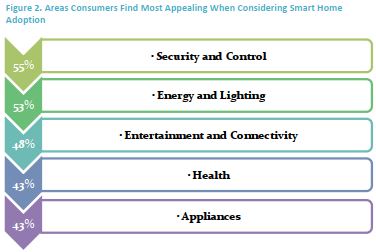 Source: GfK.com
Source: GfK.com[/caption]
So, what kinds of products can be categorized as smart home appliances and smart entertainment?
Types of Smart Home Appliances and Entertainment Products
For the sake of this report, we look at smart home appliances, which include washing machines, dryers, vacuum cleaners, refrigerators, freezers and dishwashers, as one market, and home entertainment products, which include TVs, speakers, receivers and other entertainment equipment, as another market. Below is a list of household devices categorized by purpose; we discuss many of these later in the report.
[caption id="attachment_90928" align="aligncenter" width="358"]
 Source: FBIC Global Retail & Technology
Source: FBIC Global Retail & Technology[/caption]
Smart Home Appliances
Smart home appliances, like their traditional counterparts, help people complete various household chores and functions. Many of these already come with programmable timers that facilitate their automation—but smart technology allows these devices to be monitored and controlled remotely. They are designed to enhance quality of life by reducing the time and effort people have to spend performing household tasks, and they work in coordination with other smart gadgets to allow users to better control their home environments.
Food Preparation and Storage
The smart kitchen segment of the household appliance market holds enormous potential, as the kitchen is one area of the house that often has more devices than any other. Also, many people wish to cut down time spent cooking and preparing food, which is why they buy all those devices in the first place. Below, we examine a few devices that could change cooking and food preparation in the future.
Samsung Smart Refrigerator with Wi-Fi: This two-door fridge has an eight-inch, wi-fi-enabled LCD screen that allows users to browse the web and access other Samsung devices. It also allows phone mirroring, so users can look at recipes they have saved or take calls while in the kitchen.
[caption id="attachment_90929" align="aligncenter" width="362"]
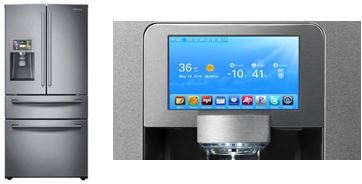 Source: Samsung.com
Source: Samsung.com[/caption]
Belkin Crock-Pot Smart Slow Cooker: This device lets the user control cooking times and temperatures from a mobile device. The user can also tell the crock-pot, through the app, to change the cooking temperature at a specific time. This removes the necessity of the user having to be near the crock-pot to monitor the cooking.
[caption id="attachment_90930" align="aligncenter" width="354"]
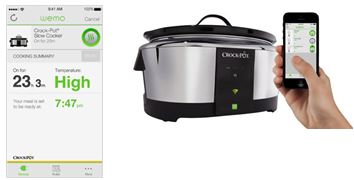 Source: Belkin.com
Source: Belkin.com[/caption]
Anova Precision Cooker: This is a device that attaches to a pot and allows sous-vide cooking at home. Sous vide, which means “under vacuum” in French, is a method of cooking commonly employed in restaurants. It involves sealing the food items to be cooked in airtight plastic bags, and placing them in a water bath. They are then cooked for a prolonged period, at a precisely controlled temperature. The Anova Precision Cooker connects to a smartphone app through which the user can monitor the temperature.
[caption id="attachment_90931" align="aligncenter" width="395"]
 Source: Anovaculinary.com
Source: Anovaculinary.com[/caption]
Philips Saeco GranBaristo Avanti: This is an app-controlled coffee maker that allows the user to make custom brews of espresso, Americano and cappuccino coffee. The coffee maker connects to an app on a tablet or smartphone, through which users can choose their preferred beverage quantity, strength and temperature.
[caption id="attachment_90932" align="aligncenter" width="355"]
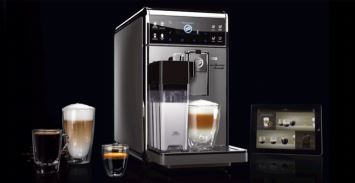 Source: Philips.com
Source: Philips.com[/caption]
Home Cleaning and Maintenance
Appliances such as washing machines, dryers and dishwashers tend to have long cycles, and users may have to plan other household chores around them. With a vacuum cleaner, the user must physically hold the device and run it through the areas of a home that need cleaning. With smart technology, though, owners are able to use these machines without needing to be physically present to operate them—or even make contact with them.
Wi-fi washing machine: This washing machine is able to connect to the user’s smartphone through wi-fi. Owners can use the machine’s smartphone app to start and stop cycles, and even monitor or manipulate them. Users can also troubleshoot problems with the machine through a smartphone app instead of having to schedule a repair person to look at it. Samsung has already introduced its own wi-fi washing machine, and LG and Whirlpool are expected to release their versions of the product sometime next year.
[caption id="attachment_90933" align="aligncenter" width="351"]
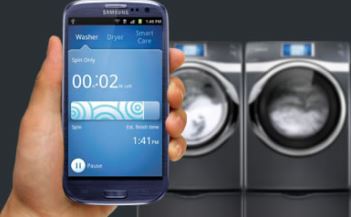 Source: Samsung.com
Source: Samsung.com[/caption]
Robotic vacuum cleaner: A robotic vacuum cleaner can be programmed to run at the user’s preferred time, with no need for the user to control or monitor it constantly. With its built-in sensors, the robot can sense an obstacle in its path and move around it. Once it finishes cleaning, the robotic vacuum cleaner returns to its docking station to recharge its battery. iRobot’s Roomba even has two front-facing cameras, from which it can stream video to a smartphone, thus doubling up as a security camera.
[caption id="attachment_90934" align="aligncenter" width="347"]
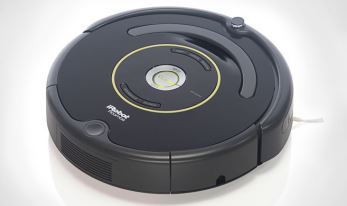 Source: Irobot.com
Source: Irobot.com[/caption]
Smart Home Entertainment
Smart home entertainment refers to the synchronization of a TV or a screen with an amplifier, speakers and other devices to form a complete home entertainment system. Such systems can also work in conjunction with the lights and curtains in a house. So, if a user wants to watch a movie, the lights dim automatically and the curtains draw shut once the user turns on the entertainment devices. When throwing a party at home, a user can set the entertainment system to “party” mode through a verbal command or a smart device, triggering the lights to create an ambient mood for the occasion, as programmed into the system. Below, we discuss a few integral components of home entertainment systems that combine the Internet and computer-like features.
Smart TV: A smart TV is like a TV and computer combined, as it comes with integrated Internet features. In addition to the regular features of a television, such as allowing viewers to watch traditionally broadcasted media, smart TVs allow users to browse the Internet, stream on-demand videos and radio, and use home-networking facilities.
[caption id="attachment_90935" align="aligncenter" width="347"]
 Source: Gadgetreview.com
Source: Gadgetreview.com[/caption]
Set-top box/DVR/digital media player: A set-top box allows a user to receive cable TV broadcasts of various channels and watch them on a television. It can also connect to the Internet, so a user can access the Internet through the TV.
A DVR allows a user to view a schedule of programs being broadcast by various TV channels he has subscribed to. It also lets the user record a show or a movie if he is unable to watch it at the time of its original broadcast. Some DVRs can also be used to connect a home’s security camera through a local area network, and can stream the footage on the TV. The TiVo is the most common example of a DVR.
[caption id="attachment_90937" align="aligncenter" width="375"]
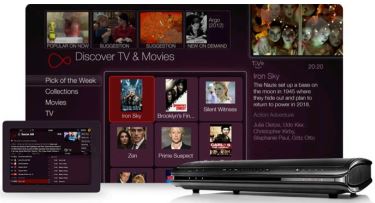 Source: Virginmedia.com
Source: Virginmedia.com[/caption]
A digital media player is a home entertainment device that can stream digital media from the Internet and connect a PC or laptop to a TV. Some digital media players also have smart TV–like features that allow them to stream media through services such as Netflix, YouTube, Spotify and the like. The Apple TV, Google TV and Roku are examples of digital media players.
[caption id="attachment_90936" align="aligncenter" width="356"]
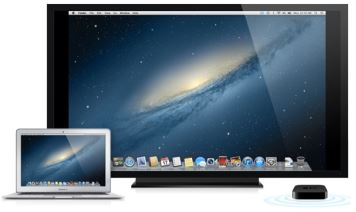 Source: Cultofmac.com
Source: Cultofmac.com[/caption]
Home theater/cinema system: A home theater, or home cinema, system is designed to simulate a movie theater experience and ambience at home. Typically, users project videos and images from a DVD/Blu-ray disc player, a storage disc or the Internet onto a large screen or a large flat-screen high-definition television (HDTV). The audio is relayed through five or more speakers arranged strategically through the home cinema room, to create a feeling of surround sound. Gaming consoles can also be wired to this system. The hub that brings all of these together is usually the receiver.
As this system involves several different devices working together at the same time, manufacturers introduced universal remote control devices to operate them. Such remotes allow all the necessary devices to switch on at the touch of single button instead of the user having to use a different remote control for each device. These days, tablets and smartphones are slowly replacing universal remote controls.
Users can program various “themes” or “actions” into the remote or smart device, so that only certain parts of the system switch on at a certain time. For example, if the user wants to watch a football game that is being broadcast on a sports channel, she can choose the “sports” mode, which will allow only the TV/projector and speakers to switch on. If she chooses the “gaming” action, the system will turn on the gaming console, screen/TV and speakers. If the user wishes to watch a movie and chooses “movie” mode, the system will switch on the DVD/Blu-ray disc player, screen/TV and speakers. The user can further refine this action to “movie through DVD/Blu-ray,” “movie through TiVo/set-top box” or “movie through Netflix,” or choose one of many more command combinations.
[caption id="attachment_90938" align="aligncenter" width="531"]
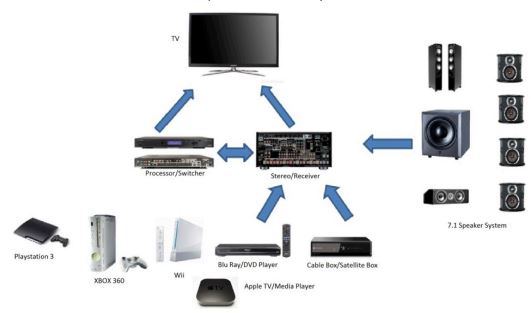 Source: Tlvexp.ca
Source: Tlvexp.ca[/caption]
What Does the Market Look Like?
According to Research and Markets, the global market for smart home appliances was $7.7 billion in 2014. The research company expects it to grow at a compound annual growth rate of 16.8% between 2015 and 2020, and to reach $19.6 billion in five years.
As of 2014, the global smart entertainment market was worth $1.8 billion and it is expected to touch $9.8 billion in 2020, according to Statista’s Digital Market Outlook portal.
[caption id="attachment_90939" align="aligncenter" width="354"]
 Source: Research and Markets/Statista/FBIC Global Retail & Technology
Source: Research and Markets/Statista/FBIC Global Retail & Technology[/caption]
Market Leaders in Smart Home Appliances and Entertainment
Most leading firms in this segment have established themselves because of their popularity and expertise over many years of manufacturing and selling home and consumer electronics. And most offer a mix of entertainment devices and other household appliances in their product portfolios.
Whirlpool was the global market leader in the domestic appliances market in 2013, according to Deutsche Bank. The companies producing smart home appliances are not necessarily the global leaders for all kinds of household appliances, but they are formidable players in the industry.
[caption id="attachment_90940" align="aligncenter" width="349"]
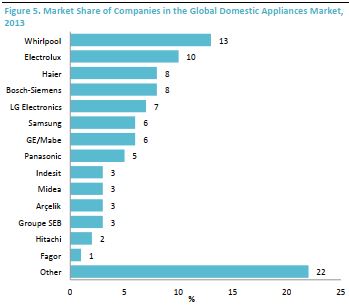 Source: Deutsche Bank/FBIC Global Retail & Technology
Source: Deutsche Bank/FBIC Global Retail & Technology[/caption]
At the 2015 Consumer Electronics Show, Samsung CEO Boo-Keun Yoon announced that the company was working toward connecting at least 90% of its products to the Internet by 2017. At the same show, LG and Whirlpool announced that they will introduce wi-fi washing machines that can be operated through a smartphone app.
Currently, in terms of its revenue and product portfolio, Samsung seems most likely to emerge as the market leader in the smart home appliance segment, and the company is constantly innovating to produce smart products. Its acquisition of SmartThings, a smart home platform for connected devices, gives it a particular competitive edge and places it far ahead in the race.
iRobot has been a pioneer in robotic vacuum cleaners, pool cleaners, gutter cleaners, floor scrubbers and floor moppers. The company’s fully automatic vacuum cleaner, the Roomba, has proved quite popular, but Samsung, Ecovacs Robotics, Neato Robotics, LG and several other brands have introduced competing alternatives.
Wi-fi-enabled and Bluetooth-enabled smart TVs, game stations, amplifiers, speakers, DVD players, DVR systems and home theater systems have all been on the market for a while. Their controls used to be integrated into one universal remote, but smartphones and tablets are starting to replace that device. There are several companies that offer the various products that make up a home entertainment system. So far, Samsung has emerged as the global market leader for TVs.
[caption id="attachment_90941" align="aligncenter" width="356"]
 Source: NPD Group/DisplaySearch/FBIC Global Retail & Technology
Source: NPD Group/DisplaySearch/FBIC Global Retail & Technology[/caption]
Among DVRs and digital media players, Apple TV has been the most popular choice for consumers who want to stream content on their TV. Google has followed closely behind with its Chromecast device, and it is expected to overtake Apple in this category by the end of this year. “Others” in the graph below include TiVo, Horizon TV, Leuto, RCA, Matricom, Micca, XtreamerTV, EZ Media Experience, Jynxbox, Western Digital, Magnavox, Satechi, SkyStreamX, Ematic, Favi and Matsunichi.
[caption id="attachment_90942" align="aligncenter" width="359"]
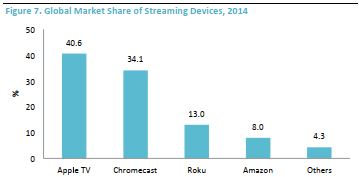 Source: Frost & Sullivan
Source: Frost & Sullivan[/caption]
Below, we provide a snapshot of the market leaders for household appliances and their smart offerings.
[caption id="attachment_90950" align="aligncenter" width="530"]
 Source: S&P Capital IQ/Samsung.com/GE.com/LG.com/Whirlpool.com/Sony.com/Panasonic.com/Electrolux.com/Haier.com
Source: S&P Capital IQ/Samsung.com/GE.com/LG.com/Whirlpool.com/Sony.com/Panasonic.com/Electrolux.com/Haier.com[/caption]
The Future of Intelligent/Connected Living
While there is immense market opportunity in the smart home appliances and entertainment segment, it could be limited to the well-established names in the market because of their long-standing image and expertise in certain product categories. Although some startups in the smart home security and smart energy management segments have developed successful innovations, we think it is unlikely that a new entrant in the smart home appliances and entertainment segment will find the same success, unless its product is a groundbreaking invention.
Samsung’s acquisition of SmartThings, a smart home platform for connected devices, will put it at the top of the leaderboard among its competitors, as its products can be seamlessly controlled and integrated. If companies in this segment are able to make products that integrate effortlessly with other connected products in a home, or that work with the more popular platform, it could make their offering more attractive.
Companies also need to consider the price of their smart products in comparison to the conventional alternatives. Most smart devices are currently priced higher than their traditional counterparts, but we estimate that prices will come down eventually as more smart gadgets flood the market and make older models obsolete.
If a gadget can connect to the web, it increases its vulnerability to hacking and cyberattacks. This is another aspect that manufacturers need to consider in building a successful smart product. Lastly, smart products need to solve problems—either by making it more efficient for a user to complete a task or by producing better results than a traditional gadget—in order to justify their high costs.
Keep an eye out for our concluding report in this series, where we will examine the different standards, platforms and protocols being used by smart products. We will also look at the security aspect of these products and what it means to have a secure connected home.
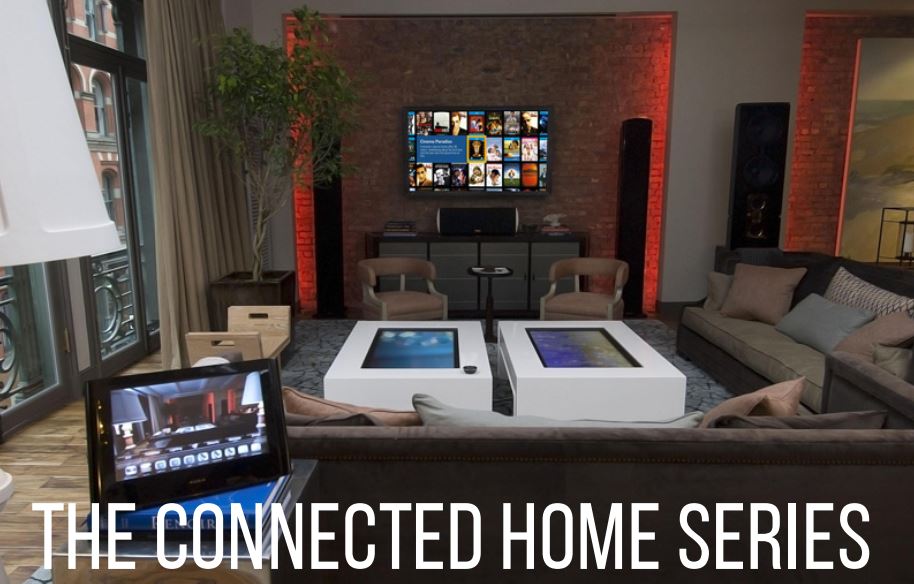

 Source: Icontrol Networks 2015 State of the Smart Home[/caption]
In GfK’s smart home study, 43% of consumers surveyed found smart appliances very appealing, and 48% said “entertainment and connectivity” was an important factor in the decision to adopt smart home technology.
[caption id="attachment_90927" align="aligncenter" width="376"]
Source: Icontrol Networks 2015 State of the Smart Home[/caption]
In GfK’s smart home study, 43% of consumers surveyed found smart appliances very appealing, and 48% said “entertainment and connectivity” was an important factor in the decision to adopt smart home technology.
[caption id="attachment_90927" align="aligncenter" width="376"] Source: GfK.com[/caption]
So, what kinds of products can be categorized as smart home appliances and smart entertainment?
Source: GfK.com[/caption]
So, what kinds of products can be categorized as smart home appliances and smart entertainment?
 Source: FBIC Global Retail & Technology[/caption]
Source: FBIC Global Retail & Technology[/caption]
 Source: Samsung.com[/caption]
Belkin Crock-Pot Smart Slow Cooker: This device lets the user control cooking times and temperatures from a mobile device. The user can also tell the crock-pot, through the app, to change the cooking temperature at a specific time. This removes the necessity of the user having to be near the crock-pot to monitor the cooking.
[caption id="attachment_90930" align="aligncenter" width="354"]
Source: Samsung.com[/caption]
Belkin Crock-Pot Smart Slow Cooker: This device lets the user control cooking times and temperatures from a mobile device. The user can also tell the crock-pot, through the app, to change the cooking temperature at a specific time. This removes the necessity of the user having to be near the crock-pot to monitor the cooking.
[caption id="attachment_90930" align="aligncenter" width="354"] Source: Belkin.com[/caption]
Anova Precision Cooker: This is a device that attaches to a pot and allows sous-vide cooking at home. Sous vide, which means “under vacuum” in French, is a method of cooking commonly employed in restaurants. It involves sealing the food items to be cooked in airtight plastic bags, and placing them in a water bath. They are then cooked for a prolonged period, at a precisely controlled temperature. The Anova Precision Cooker connects to a smartphone app through which the user can monitor the temperature.
[caption id="attachment_90931" align="aligncenter" width="395"]
Source: Belkin.com[/caption]
Anova Precision Cooker: This is a device that attaches to a pot and allows sous-vide cooking at home. Sous vide, which means “under vacuum” in French, is a method of cooking commonly employed in restaurants. It involves sealing the food items to be cooked in airtight plastic bags, and placing them in a water bath. They are then cooked for a prolonged period, at a precisely controlled temperature. The Anova Precision Cooker connects to a smartphone app through which the user can monitor the temperature.
[caption id="attachment_90931" align="aligncenter" width="395"] Source: Anovaculinary.com[/caption]
Philips Saeco GranBaristo Avanti: This is an app-controlled coffee maker that allows the user to make custom brews of espresso, Americano and cappuccino coffee. The coffee maker connects to an app on a tablet or smartphone, through which users can choose their preferred beverage quantity, strength and temperature.
[caption id="attachment_90932" align="aligncenter" width="355"]
Source: Anovaculinary.com[/caption]
Philips Saeco GranBaristo Avanti: This is an app-controlled coffee maker that allows the user to make custom brews of espresso, Americano and cappuccino coffee. The coffee maker connects to an app on a tablet or smartphone, through which users can choose their preferred beverage quantity, strength and temperature.
[caption id="attachment_90932" align="aligncenter" width="355"] Source: Philips.com[/caption]
Source: Philips.com[/caption]
 Source: Samsung.com[/caption]
Robotic vacuum cleaner: A robotic vacuum cleaner can be programmed to run at the user’s preferred time, with no need for the user to control or monitor it constantly. With its built-in sensors, the robot can sense an obstacle in its path and move around it. Once it finishes cleaning, the robotic vacuum cleaner returns to its docking station to recharge its battery. iRobot’s Roomba even has two front-facing cameras, from which it can stream video to a smartphone, thus doubling up as a security camera.
[caption id="attachment_90934" align="aligncenter" width="347"]
Source: Samsung.com[/caption]
Robotic vacuum cleaner: A robotic vacuum cleaner can be programmed to run at the user’s preferred time, with no need for the user to control or monitor it constantly. With its built-in sensors, the robot can sense an obstacle in its path and move around it. Once it finishes cleaning, the robotic vacuum cleaner returns to its docking station to recharge its battery. iRobot’s Roomba even has two front-facing cameras, from which it can stream video to a smartphone, thus doubling up as a security camera.
[caption id="attachment_90934" align="aligncenter" width="347"] Source: Irobot.com[/caption]
Source: Irobot.com[/caption]
 Source: Gadgetreview.com[/caption]
Set-top box/DVR/digital media player: A set-top box allows a user to receive cable TV broadcasts of various channels and watch them on a television. It can also connect to the Internet, so a user can access the Internet through the TV.
A DVR allows a user to view a schedule of programs being broadcast by various TV channels he has subscribed to. It also lets the user record a show or a movie if he is unable to watch it at the time of its original broadcast. Some DVRs can also be used to connect a home’s security camera through a local area network, and can stream the footage on the TV. The TiVo is the most common example of a DVR.
[caption id="attachment_90937" align="aligncenter" width="375"]
Source: Gadgetreview.com[/caption]
Set-top box/DVR/digital media player: A set-top box allows a user to receive cable TV broadcasts of various channels and watch them on a television. It can also connect to the Internet, so a user can access the Internet through the TV.
A DVR allows a user to view a schedule of programs being broadcast by various TV channels he has subscribed to. It also lets the user record a show or a movie if he is unable to watch it at the time of its original broadcast. Some DVRs can also be used to connect a home’s security camera through a local area network, and can stream the footage on the TV. The TiVo is the most common example of a DVR.
[caption id="attachment_90937" align="aligncenter" width="375"] Source: Virginmedia.com[/caption]
A digital media player is a home entertainment device that can stream digital media from the Internet and connect a PC or laptop to a TV. Some digital media players also have smart TV–like features that allow them to stream media through services such as Netflix, YouTube, Spotify and the like. The Apple TV, Google TV and Roku are examples of digital media players.
[caption id="attachment_90936" align="aligncenter" width="356"]
Source: Virginmedia.com[/caption]
A digital media player is a home entertainment device that can stream digital media from the Internet and connect a PC or laptop to a TV. Some digital media players also have smart TV–like features that allow them to stream media through services such as Netflix, YouTube, Spotify and the like. The Apple TV, Google TV and Roku are examples of digital media players.
[caption id="attachment_90936" align="aligncenter" width="356"] Source: Cultofmac.com[/caption]
Home theater/cinema system: A home theater, or home cinema, system is designed to simulate a movie theater experience and ambience at home. Typically, users project videos and images from a DVD/Blu-ray disc player, a storage disc or the Internet onto a large screen or a large flat-screen high-definition television (HDTV). The audio is relayed through five or more speakers arranged strategically through the home cinema room, to create a feeling of surround sound. Gaming consoles can also be wired to this system. The hub that brings all of these together is usually the receiver.
As this system involves several different devices working together at the same time, manufacturers introduced universal remote control devices to operate them. Such remotes allow all the necessary devices to switch on at the touch of single button instead of the user having to use a different remote control for each device. These days, tablets and smartphones are slowly replacing universal remote controls.
Users can program various “themes” or “actions” into the remote or smart device, so that only certain parts of the system switch on at a certain time. For example, if the user wants to watch a football game that is being broadcast on a sports channel, she can choose the “sports” mode, which will allow only the TV/projector and speakers to switch on. If she chooses the “gaming” action, the system will turn on the gaming console, screen/TV and speakers. If the user wishes to watch a movie and chooses “movie” mode, the system will switch on the DVD/Blu-ray disc player, screen/TV and speakers. The user can further refine this action to “movie through DVD/Blu-ray,” “movie through TiVo/set-top box” or “movie through Netflix,” or choose one of many more command combinations.
[caption id="attachment_90938" align="aligncenter" width="531"]
Source: Cultofmac.com[/caption]
Home theater/cinema system: A home theater, or home cinema, system is designed to simulate a movie theater experience and ambience at home. Typically, users project videos and images from a DVD/Blu-ray disc player, a storage disc or the Internet onto a large screen or a large flat-screen high-definition television (HDTV). The audio is relayed through five or more speakers arranged strategically through the home cinema room, to create a feeling of surround sound. Gaming consoles can also be wired to this system. The hub that brings all of these together is usually the receiver.
As this system involves several different devices working together at the same time, manufacturers introduced universal remote control devices to operate them. Such remotes allow all the necessary devices to switch on at the touch of single button instead of the user having to use a different remote control for each device. These days, tablets and smartphones are slowly replacing universal remote controls.
Users can program various “themes” or “actions” into the remote or smart device, so that only certain parts of the system switch on at a certain time. For example, if the user wants to watch a football game that is being broadcast on a sports channel, she can choose the “sports” mode, which will allow only the TV/projector and speakers to switch on. If she chooses the “gaming” action, the system will turn on the gaming console, screen/TV and speakers. If the user wishes to watch a movie and chooses “movie” mode, the system will switch on the DVD/Blu-ray disc player, screen/TV and speakers. The user can further refine this action to “movie through DVD/Blu-ray,” “movie through TiVo/set-top box” or “movie through Netflix,” or choose one of many more command combinations.
[caption id="attachment_90938" align="aligncenter" width="531"] Source: Tlvexp.ca[/caption]
Source: Tlvexp.ca[/caption]
 Source: Research and Markets/Statista/FBIC Global Retail & Technology[/caption]
Source: Research and Markets/Statista/FBIC Global Retail & Technology[/caption]
 Source: Deutsche Bank/FBIC Global Retail & Technology[/caption]
At the 2015 Consumer Electronics Show, Samsung CEO Boo-Keun Yoon announced that the company was working toward connecting at least 90% of its products to the Internet by 2017. At the same show, LG and Whirlpool announced that they will introduce wi-fi washing machines that can be operated through a smartphone app.
Currently, in terms of its revenue and product portfolio, Samsung seems most likely to emerge as the market leader in the smart home appliance segment, and the company is constantly innovating to produce smart products. Its acquisition of SmartThings, a smart home platform for connected devices, gives it a particular competitive edge and places it far ahead in the race.
iRobot has been a pioneer in robotic vacuum cleaners, pool cleaners, gutter cleaners, floor scrubbers and floor moppers. The company’s fully automatic vacuum cleaner, the Roomba, has proved quite popular, but Samsung, Ecovacs Robotics, Neato Robotics, LG and several other brands have introduced competing alternatives.
Wi-fi-enabled and Bluetooth-enabled smart TVs, game stations, amplifiers, speakers, DVD players, DVR systems and home theater systems have all been on the market for a while. Their controls used to be integrated into one universal remote, but smartphones and tablets are starting to replace that device. There are several companies that offer the various products that make up a home entertainment system. So far, Samsung has emerged as the global market leader for TVs.
[caption id="attachment_90941" align="aligncenter" width="356"]
Source: Deutsche Bank/FBIC Global Retail & Technology[/caption]
At the 2015 Consumer Electronics Show, Samsung CEO Boo-Keun Yoon announced that the company was working toward connecting at least 90% of its products to the Internet by 2017. At the same show, LG and Whirlpool announced that they will introduce wi-fi washing machines that can be operated through a smartphone app.
Currently, in terms of its revenue and product portfolio, Samsung seems most likely to emerge as the market leader in the smart home appliance segment, and the company is constantly innovating to produce smart products. Its acquisition of SmartThings, a smart home platform for connected devices, gives it a particular competitive edge and places it far ahead in the race.
iRobot has been a pioneer in robotic vacuum cleaners, pool cleaners, gutter cleaners, floor scrubbers and floor moppers. The company’s fully automatic vacuum cleaner, the Roomba, has proved quite popular, but Samsung, Ecovacs Robotics, Neato Robotics, LG and several other brands have introduced competing alternatives.
Wi-fi-enabled and Bluetooth-enabled smart TVs, game stations, amplifiers, speakers, DVD players, DVR systems and home theater systems have all been on the market for a while. Their controls used to be integrated into one universal remote, but smartphones and tablets are starting to replace that device. There are several companies that offer the various products that make up a home entertainment system. So far, Samsung has emerged as the global market leader for TVs.
[caption id="attachment_90941" align="aligncenter" width="356"] Source: NPD Group/DisplaySearch/FBIC Global Retail & Technology[/caption]
Among DVRs and digital media players, Apple TV has been the most popular choice for consumers who want to stream content on their TV. Google has followed closely behind with its Chromecast device, and it is expected to overtake Apple in this category by the end of this year. “Others” in the graph below include TiVo, Horizon TV, Leuto, RCA, Matricom, Micca, XtreamerTV, EZ Media Experience, Jynxbox, Western Digital, Magnavox, Satechi, SkyStreamX, Ematic, Favi and Matsunichi.
[caption id="attachment_90942" align="aligncenter" width="359"]
Source: NPD Group/DisplaySearch/FBIC Global Retail & Technology[/caption]
Among DVRs and digital media players, Apple TV has been the most popular choice for consumers who want to stream content on their TV. Google has followed closely behind with its Chromecast device, and it is expected to overtake Apple in this category by the end of this year. “Others” in the graph below include TiVo, Horizon TV, Leuto, RCA, Matricom, Micca, XtreamerTV, EZ Media Experience, Jynxbox, Western Digital, Magnavox, Satechi, SkyStreamX, Ematic, Favi and Matsunichi.
[caption id="attachment_90942" align="aligncenter" width="359"] Source: Frost & Sullivan[/caption]
Below, we provide a snapshot of the market leaders for household appliances and their smart offerings.
[caption id="attachment_90950" align="aligncenter" width="530"]
Source: Frost & Sullivan[/caption]
Below, we provide a snapshot of the market leaders for household appliances and their smart offerings.
[caption id="attachment_90950" align="aligncenter" width="530"] Source: S&P Capital IQ/Samsung.com/GE.com/LG.com/Whirlpool.com/Sony.com/Panasonic.com/Electrolux.com/Haier.com[/caption]
Source: S&P Capital IQ/Samsung.com/GE.com/LG.com/Whirlpool.com/Sony.com/Panasonic.com/Electrolux.com/Haier.com[/caption]